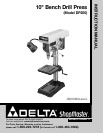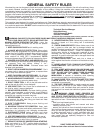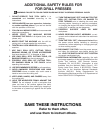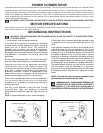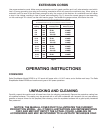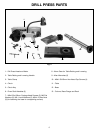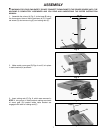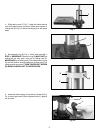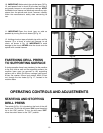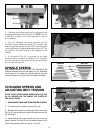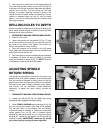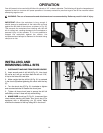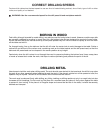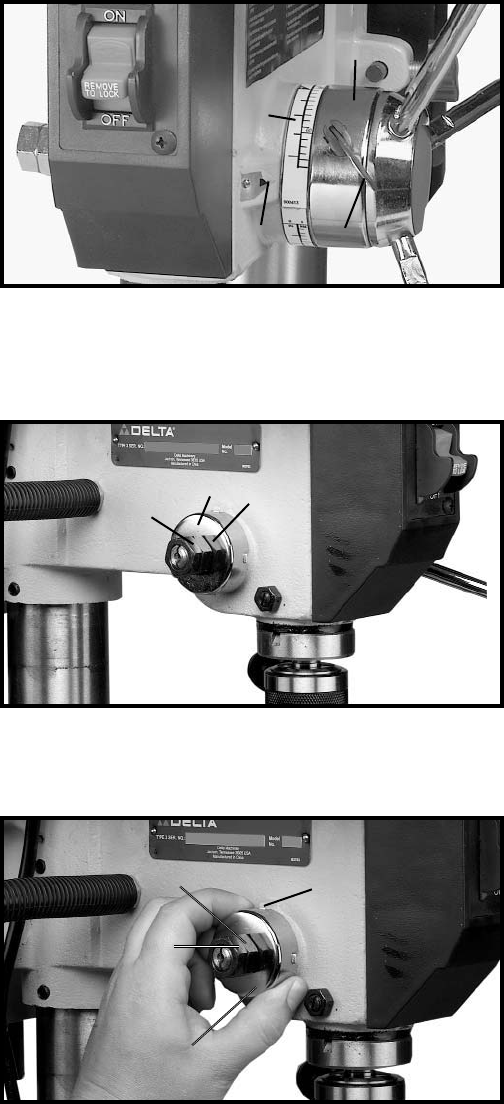
13
Fig. 27
DRILLING HOLES TO DEPTH
Where a number of holes are to be drilled to exactly the
same depth, a depth stop is provided in the pinion shaft
housing and is used as follows:
1. DISCONNECT MACHINE FROM POWER SOURCE.
2. Insert bit into chuck.
3. Lower the spindle until the pointer (C) Fig. 27, lines
up with the mark on the scale (D) you wish the depth of
the holes to be drilled. Then tighten lock screw (A).
Return the spindle to the up position.
4. Place the material to be drilled on the drill press
table. Raise the drill press table until the material to be
drilled just touches the drill bit.
5. Drill a test hole to check the adjustment and readjust
if necessary. All holes will then be drilled to the exact
depth as indicated on scale (D) Fig. 27. NOTE: Scale (D)
is calibrated in both inches and millimeters.
C
A
B
D
ADJUSTING SPINDLE
RETURN SPRING
The spindle is automatically returned to its upper most
position when the handle is released. It is recommended
that the handle be allowed to slowly return to the top
position after each hole has been drilled in the material.
This spring has been properly adjusted at the factory
and should not be disturbed unless absolutely
necessary. To adjust the return spring, proceed as
follows:
1. DISCONNECT MACHINE FROM POWER SOURCE.
2. Loosen nuts (B) and (E) Fig. 28. Make sure spring
housing (A) stays engaged with head casting.
3. While FIRMLY HOLDING spring housing (A) Fig. 29
pull out housing and rotate it until boss (D) is engaged
with the next notch on the housing. Turn the housing
counterclockwise to increase or clockwise to decrease
spring tension. Turn nut (E) until it contacts spring
housing (A), then back nut (E) out a 1/4 turn from spring
housing (A). Tighten nut (B) against nut (E), to hold the
housing in place. IMPORTANT: Inside nut (E) should
not contact spring housing (A) when tightened.
Fig. 28
Fig. 29
5. After the belt is positioned on the desired steps of
the motor and spindle pulleys, move motor (D) Fig. 26,
to the rear until the belt is properly tensioned and tighten
tension lock knob (B). The belt should be just tight
enough to prevent slipping. Excessive tension will
reduce the life of the belt, pulleys and bearings. Correct
tension is obtained when the belt (C) can be flexed
about 1" out of line midway between the pulleys using
light finger pressure.
B
E
A
A
D
B
E



